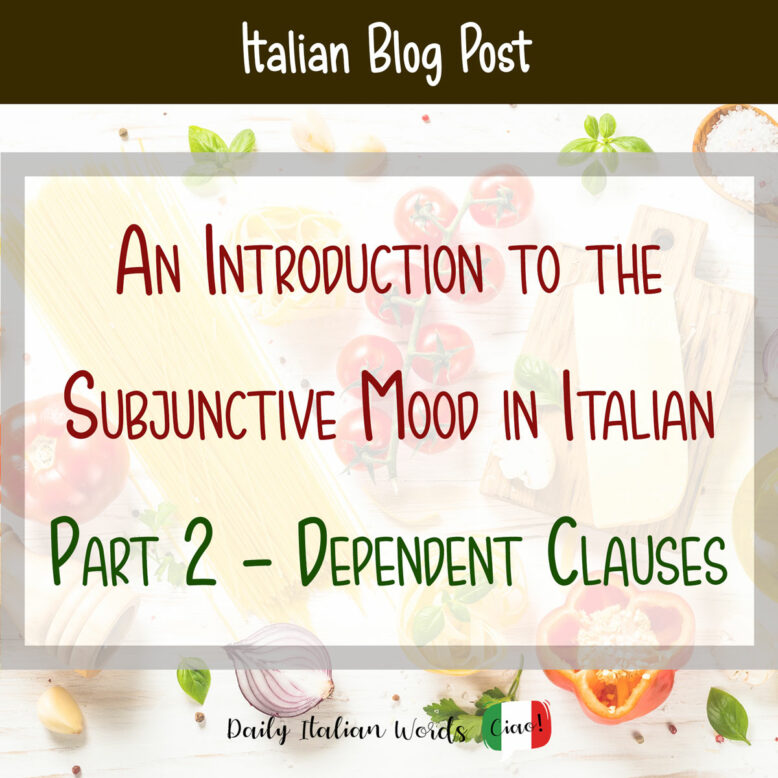Mi sembra che la pasta sia cotta!
Imagine an evening at the house of Italian friends, let’s call them Elena and Marco: a few laughs, an appetiser, maybe a Prosecco or a Spritz while you wait to take your place at the table with your friends. The atmosphere is warm and friendly, and you walk back and forth from the kitchen, glass in hand, while the hosts are cooking, engaged in casual conversation:
Marco: Elena, mi sembra che la pasta sia cotta, vieni! (Elena, I think the pasta is cooked, come!)
Elena: Sì, è pronta! David, mi auguro che tu e Carol abbiate fame, perché questa sera ho cucinato tanto! (Yes, it’s done! David, I hope you and Carol are hungry, because I cooked a lot tonight!)
David: Certo, abbiamo appetito! (Sure, we’re hungry!)
Elena: Oh, ho paura che il vino sia finito… (Oh, I’m afraid we’re out of wine…)
Marco: No, mi pare che ci siano ancora due bottiglie di vino rosso… eccole qui! A tavola! (No, I think there are still two bottles of red wine… here they are! Let’s eat!)
This conversation, peppered with subjunctives (sia, abbiate, siano), is a perfectly normal exchange that can take place in any kitchen, from the north to the south of the Italian boot — lo stivale.

We have already explained before that the question of whether or not the subjunctive is worth learning is a false problem; it is so much part of our language that it pops up everywhere, even in the kitchen!
Now read the dialogue again and focus on the phrases that go with the subjunctive. As you probably noticed, the subjunctive is often paired with expressions that convey personal opinion, hope, fear; in a word, subjectivity. These are the ones found in our dialogue: mi sembra che, mi auguro che, ho paura che, mi pare che.
You can easily see how the subjunctive can be a powerful tool for Italians to express a point of view and convey a wide range of feelings, such as uncertainty, possibility, doubt, desire, in short, everything that is not a sure fact. Always remember the contrast with the king of objectivity, the indicative mood, which, on the contrary, presents a fact as true, real, certain.
Compare the assertive indicative with the more doubtful subjunctive:
- So che il colpevole è il lattaio! I know the milkman is the culprit! (here we can imagine a resounding fist pounding on a table, as if to sweep away any shadow of doubt)
- Credo invece che il colpevole sia il postino. I actually think the postman is the culprit. (Imagine here a mind that is more open to possibilities, not so sure that everything is black and white)
You may have noticed that, in our examples, the subjunctive is not used in the main clause: our aim today is precisely to understand when to use it in dependent clauses. Here is a little how-to guide.
Use the subjunctive:
- when there is a verb expressing an opinion in the main clause: Penso che il mondo cambi troppo velocemente. I think the world is changing too quickly.
- when in the main clause there is a verb expressing will, doubt, desire, feeling, control: Io dubito che tu capisca la situazione: il preside ha ordinato che tutti indossino l’uniforme della scuola. I doubt you understand the situation: the headmaster has ordered everyone to wear the school uniform.
- with some impersonal expressions: Pare che Sandra abbia vinto alla lotteria! Non è un caso che voglia comprare una Ferrari! Sandra seems to have won the lottery! It’s no coincidence that she wants to buy a Ferrari!
- with indirect questions: Mi chiedo perché Sergio sia sempre in ritardo. I wonder why Sergio is always late.
- with the conjunctions sebbene, nonostante, malgrado, benché: Sebbene sia un argomento difficile, gli studenti ascoltano con attenzione. Even if it is a difficult subject, the students listen attentively.
Watch out: the conjunction anche se takes the indicative: Anche se è tardi, voglio leggere il mio libro. Even though it is late, I want to read my book.
- in conditional sentences: Se tu avessi capito il problema, non mi faresti questa domanda. If you understood the problem, you would not be asking me this question.
This list is not exhaustive, but it may provide some clues and point you in the right direction.

In the above cases, the use of the subjunctive is required, it is not a matter of personal preference; other times, instead, the subjunctive is not mandatory, although it signals a higher register and a somewhat more elegant style.
For example, we can use both forms:
- when the dependent clause comes before the main clause: Che Paolo ama/ami il vino, lo sanno tutti. Paolo loves wine, everybody knows that.
- when the main clause is negative: Io non dico che tu sei/sia pigro. I am not saying that you are lazy.
- when the main verb is sapere and the dependent clause is an indirect question: Non so se è/sia il caso di fare queste domande. I don’t know if it’s appropriate to ask these questions.

Now, all these dos and don’ts can make one’s head spin, so much so that many people end up using the subjunctive even when it is not needed, just to be on the safe side. However, we ought to remember that we do not need the subjunctive after expressions that convey unyielding certainty:
- è vero/incontestabile/certo/ovvio/sicuro che: È ovvio che non hai studiato! It is obvious that you have not studied!
- sapere che: So che non hai studiato! I know that you have not studied!
- verbs of saying such as dire, dichiarare, affermare, raccontare, scrivere: Il presidente ha dichiarato che la situazione è in miglioramento. The president has declared that the situation is improving.

Finally, a puzzling but important exception to keep in mind: we do not use the subjunctive after the expression Secondo me, in my opinion. For example: Secondo me hai ragione! In my opinion, you are right.
We have at this point made the concept of objectivity (indicative) and subjectivity (subjunctive) our own. Before we say goodbye, however, I would like to leave you with some thoughts on the verb… to think, pensare.
Pensare does not always take the subjunctive. You may find it odd, since thinking is the quintessential subjective action. This is true when the verb pensare means to believe and therefore expresses a personal opinion, a subjective point of view. But sometimes the verb pensare means to focus, to reflect, and in this case it takes the indicative. Compare:
- Penso che Viola abbia speso 500 euro per quella borsa. I think Viola spent 500 euros on that bag. I do not know for sure how much money Viola spent.
- Se penso che Viola ha speso 500 euro per quella borsa, mi arrabbio. When I think that Viola spent 500 euros on that bag, I get angry. Here, I am focusing on a fact that is certainly true. Viola really spent a lot of money on that bag!
And now, happy subjunctive, everyone!
Our videos on the subjunctive mood:
About the Author: My Italian Circle is a place where you can go to find engaging new ways to learn Italian, test and improve your listening skills, and maybe even make peace with Italian grammar. We create clear, accurate, authentic content every week on YouTube and Patreon.

Anna is a professional language teacher and Diana is a freelance translator. On their website and YouTube channel My Italian Circle, they create content for Italian learners, especially English speakers. They help with grammar, progression from beginner level, and offer insights into authentic everyday Italian, Italian culture, and lifestyle.


